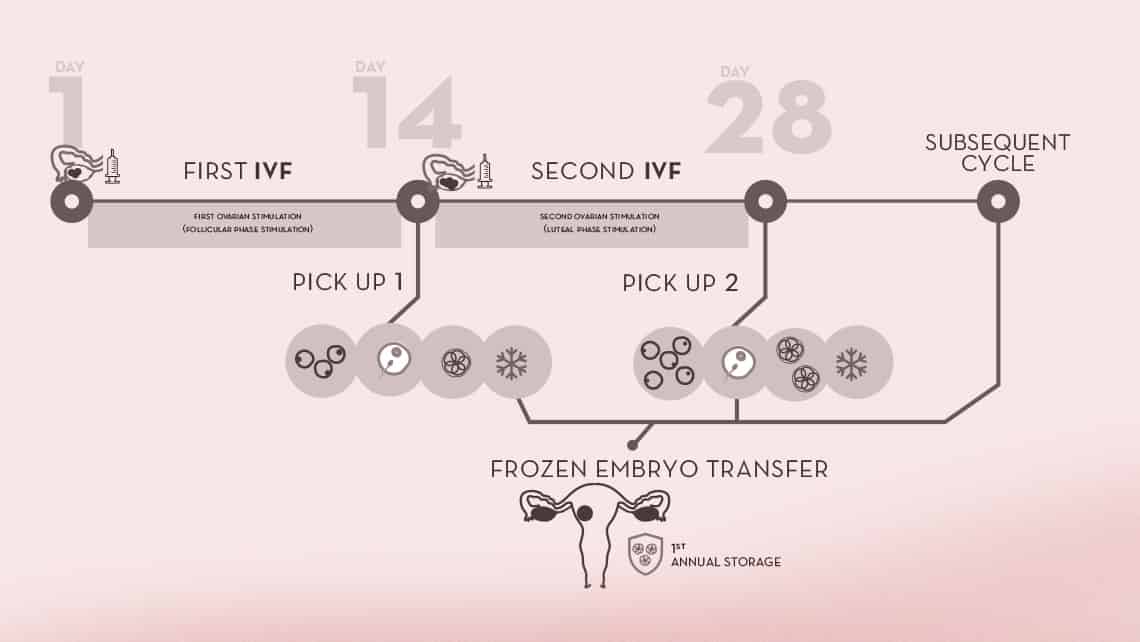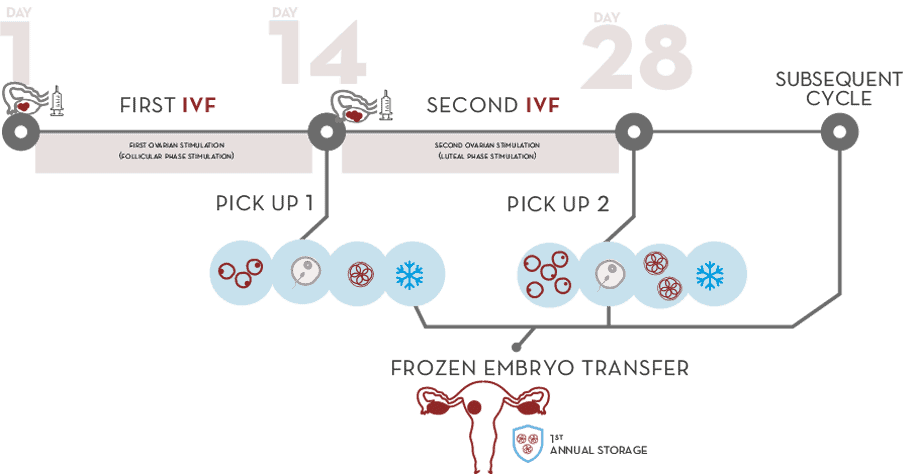
Double IVF for low ovarian reserve
Double IVF consists of performing two in vitro fertilisation treatments in a single cycle, in order to accumulate the embryos resulting from each process.
This way, we would carry out a first ovarian stimulation and fertilise the eggs obtained, cryopreserving the embryos. We would then proceed to a second stimulation and fertilisation, adding the embryos obtained to the previous ones. We could also carry out a third stimulation to increase the number of accumulated embryos (triple IVF). Finally, in cases where an embryo biopsy is indicated for PGD (pre-implantation genetic diagnosis), we would perform the study of all the accumulated embryos.
This strategy, allow us to increase the number of embryos available in patients with low ovarian reserve.
Low ovarian reserve is when less than 4 eggs are obtained in each stimulation cycle. This means an increased risk of not obtaining any embryos, or a lower number. This is due to the fact that not all eggs fertilise and not all of them are capable of giving rise to a competent embryo.
The improvement in vitrification techniques has allowed us to cryopreserve oocytes or embryos from different stimulation treatments in these patients, with high survival rates. However, due to age or certain pathologies, the competence of the vitrified egg may be lower. In these cases, it would be advisable to fertilise fresh oocytes and complete embryo development by cryopreserving embryos.

Double IVF advantages
Double IVF has many advantages, which are detailed below:
- Shorter treatment time: the number of embryos available is increased in a short period of time, by performing two treatments in a single cycle.
- Treatment effectiveness: The greater the number of embryos, the greater the probability of pregnancy per cycle. In addition, the survival probability of vitrified embryo is greater than that of the oocyte.
- Embryo biopsy: We will have a greater number of embryos to biopsy, which will increase the chances of obtaining a healthy embryo.
- Cost-effective: In patients with low ovarian reserve, the double IVF process is more cost-effective than separate complete treatments. The same applies to embryo biopsy costs, which will be reduced by performing the procedure on all embryos at the same time.
- Emotional: The reduced waiting time and the greater number of embryos available for transfer reduces the patients’ anxiety level.
- Future fertility: The greater number of embryos available will increase the possibility of increasing the family in the future. In many patients, the ovarian reserve for a second pregnancy may be even more diminished, due to the time elapsed after gestation and delivery.
Bibliography from Instituto Bernabeu
- Follicle-stimulating hormone receptor genotype and its influence on the results of double ovarian stimulation in IVF cycles
- Y en la ESHRE 2019, entre otros. The luteal phase of double ovarian stimulation treatment (DuoStim) provides higher oocyte and blastocyst yield in unselected infertile patients: a retrospective, same-patient, cohort study
Dr Ana Fuentes, gyneacologist at Instituto Bernabeu
